The Mike Toole Show
Let's Talk It OVA
by Michael Toole,
Twenty years ago, everything had started coming up Tenchi Muyo!. The series actually kicked off in Japan in 1992, but went global in ’94, and just kept on truckin’. There was an OVA series, then another OVA series, then a TV series and more OVA stuff and a movie and another TV series and another movie and another TV series. Two decades on, we're left with a complicated web of sequels, spinoffs, and alternate retellings about a nice kid with cosmic wings, a ratty little ponytail, and his five or six would-be space girlfriends.
I bring up Tenchi Muyo! for two reasons. First of all, I figured the franchise had flatlined when possibly its most distant, marginal spinoff, 2009's Saint Knight Story in an Alternate World, sat quietly in the shop window for years. “Well,” I thought to myself earlier this year, “since there's still no English release, I guess there really is no need for Ten—“ and that's when Funimation released it, hastily retitled Tenchi Muyo: War on Geminar. There's a new Tenchi airing on Japanese TV right now—a 3-minute comedy short that is, a bit ludicrously, sponsored by the city of Takahashi's tourism board. We're still waiting to see if there's a need for this show in English. The second reason I cite Tenchi Muyo! is because it dropped at what might've been the apex of original video animation releases. We like to think of the 80s as the golden age of OVAs, because that's when the medium of direct-to-video anime was established and took off, but there were dozens released every year throughout most of the 1990s, as well. Some of them are really fondly remembered by us nerds—fare like Giant Robo, Macross Plus, and of course, Golden Boy. Other stuff? Well…

If you ask me, one little anime injustice is the way Tenchi Muyo! got a fresh coat of paint every year or two, but El Hazard, another AIC franchise, eventually developed rust spots and had the tires stolen off of it by neighborhood kids. Tenchi motors along, but El Hazard sits forlornly on cinderbocks on AIC's front lawn. I'm sure the studio will get around to fixing it up someday! In a time before the “kids transported to another world” formula got too stale, El Hazard mixed up The Prisoner of Zenda, John Carter of Mars, and the usual schoolkids getting into trouble to create a tasty brew. Sure, protagonist Makoto Mizuhara wasn't very interesting, but the show's megalomaniacal villain, Jinnai, sure was. My favorite character, like everyone else's, is Mr. Fujisawa, the alcoholic teacher whose journey to the mystical world of El Hazard has imbued him with super-strength… but only when sober.
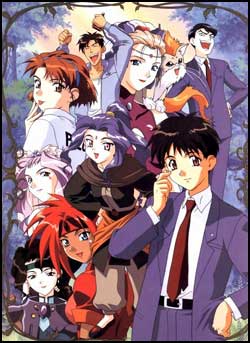
The resulting OVA series is a whirlwind of exciting action, dumb jokes, intrigue, magical priestesses, and giant bug dudes. It's a great trip, the kind of show that inspired me and my friends to make a frenzied trip to Media Play every time a new VHS tape hit. Overall, El Hazard looked better than Tenchi, had better characters, and a better story. It ended up with way fewer sequels, though, which is kinda merciful—El Hazard 2 isn't too bad, but the Wanderers: El Hazard TV remake is completely superfluous, and the Alternate World TV sequel brings the original narrative to a halting, muted conclusion. You know, maybe it's for the best that they never made two more spinoffs, three movies, and a magical girl parody featuring Alielle and the talking cat that turns into a suit of armor.
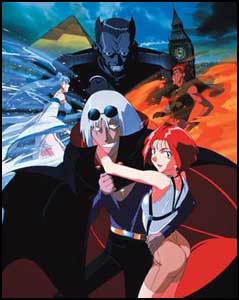
Another neat-o OVA with a head-scratching TV remake is Master of Mosquiton. I enjoy the OVA series, a roaring 20s action-comedy starring a vampire, his sassy lady handler, a couple of other supernatural good guys, and the bad guys, who are literally Rasputin and the Comte de St. Germain. As Mosquiton, a silver-haired vampire who's alternately spooky and idiotic, Takehito Koyasu gets to play both the suave master of darkness and the idiot fall guy, which is rare for him. He'd later go on to voice an even more famous vampire, that guy from Jojo's Bizarre Adventure. What was his name again? Mosquiton is another joint from the mind of Satoru Akahori, who's produced a veritable mountain of agreeable action-comedy silliness like Sorcerer Hunters and Knights of Ramune. The TV spinoff, Master of Mosquiton ’99 (ah, nothing like instantly dating your work by including the year in the title—lookin’ your way, Eat Man ’98!) was allegedly licensed at one point, but never released. I wonder what happened with that? Did they dub any episodes? And if so, did they keep on gratingly adapting “Mo-chan” to “Mosky”?
The aforementioned Akahori didn't create Video Girl Ai – that good deed was courtesy of manga artist Masakazu Katsura—but he played script doctor on a couple of episodes of its 1992 OVA adaptation. If you got into the North American anime scene in the mid-90s, Video Girl Ai was one of those things that was practically standard-issue. You'd sign up for a club or visit a convention and bam, a Sony T-120 videocassette with “video girl AI” scribbled directly on the tape in silver magic marker would just appear in your mailbox. Despite its imagery of big CRT televisions and videotapes being a bit charmingly dated, Video Girl Ai still has some very relevant themes. There's been a lot of discussion about which anime started the “moe” boom. I've heard everything from Castle of Cagliostro to Cardcaptor Sakura suggested, but for me the moe ideal of wanting to protect something fragile is straight outta Video Girl Ai. Title character Ai Amano really is a fantasy come to life, a bubbly, vivacious dream girl—but her recipient Yota's VHS deck hasn't had its heads cleaned in a long time, so when he plays her back, she's riddled with tracking and stability problems.
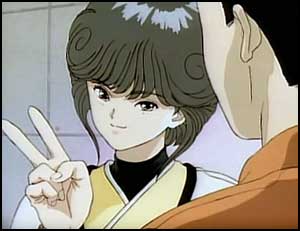
Yep, Video Girl Ai is full of nerdy video jokes. Ai is supposed to be perfect, but her faulty playback means she's temperamental, clumsy, and in the show's twist, able to return Yota's affectionate feelings. Adding to the appeal is yet another definitive performance by Megumi Hayashibara as Ai. When her creator appears to initiate a product recall on the defective Ai, Yota finds himself burning with the desire to protect his virtual girl and sacrifice everything for love-- which results in self-injury and crucifixion. Video Girl Ai is completely over the top—couldn't Yota have just fixed Ai with a time-base corrector, or duplicated her using a Macrovision buster?-- but it somehow works.
Back in the mid-2000s, Universal Pictures experimented with releasing short animated film tie-ins to their Hollywood blockbusters. The result was sometimes passable (Chronicles of Riddick: Dark Fury), and sometimes hilariously bad (Van Helsing: London Assignment). But this was by no means the first time a live-action film franchise spawned an animated spinoff. A decade earlier, Keita Amemiya's successful Zeiram film led to a number of projects—a sequel, some video games, and a little something called IRIA: Zeiram the Animation.
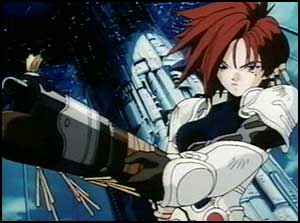
IRIA is seriously cool stuff, and still holds up well today. It's got the title character, a scrappy lady bounty hunter with spiky hair and weird weapons. It's got a scary, towering alien baddie in Zeiram, the star of the earlier film. It's got a few continuity clashes with the live-action version, but that's okay, because it's the better project. The Sci-Fi Channel ran this thing incessantly back in the mid-1990s, and it's easy to see why: it's straightforward, looks good, and is filled with action scenes. When DVD finally came into its own, Central Park Media used their release as an early showcase for DVD technology, as the entire six-episode set was crammed onto a single disc. Yeah, it looked pretty crappy. But still, only one disc instead of three VHS tapes! Years later, the license would lapse, and rival Media Blasters, who sure did blast Central Park Media in this case, re-released it. But even that release is gone from shelves, leaving a big, awkward gap between Ichi the Killer: Episode Zero and Iron Man: Rise of Technovore. Hey, those are live-action film tie-ins, too!
When I was first really falling in love with anime, one of Viz Media's big tentpole properties was something called Key the Metal Idol. The title's a bit awkward, but the premise—a sophisticated android girl yearns to be human, but her dead creator has revealed that this can only happen if she gains 30,000 friends—is undoubtedly an interesting one. Of course, nowadays, making 30,000 friends is as easy as setting up a Twitter account that pretends to be Bill Murray and recycles jokes. But back in 1994, when Key made its debut, it was really something different. In a notably pre-Evangelion landscape, Key was cerebral and provocative in a time when most shows were not.
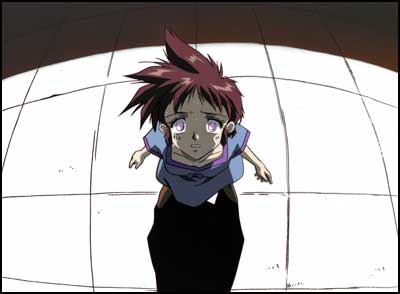
Key the Metal Idol has a wide variety of weird, secretive characters—a ruthless merc, a cult leader, a loyal working-class girl, and a variety of bizarre entertainment figures. It's got a distinctive color palette and ominous tone that brings to mind the approach of film directors like David Lynch or Tarsem Singh. There's also some mecha action, but the show's sense of foreboding and ambiguous story never really fades into the background—it makes for an aesthetic that I seldom see in anime. The whole thing is tied together with a great set of pop tunes by Sario Kijima.
There's five OVAs—and darn good ones, at that-- that you used to be able to find at the video store. I bring titles like this up a couple of times a year, because our shared otaku institutional memory continues to get fuzzy thanks to stuff like this going outta print. There's a treasure trove of new anime every season nowadays, but what the OVA used to be is pretty much gone. We might not be able to easily preserve the format, but we can remember it.
The aforementioned five OVAs all got neat, accessible English-language releases. But lots of cool, weird stuff did not. I'm not talking ten or twenty OVAs here, either-- we're talking several dozen titles, actually, and I'm just referring to the 1990s. Just take a gander at this old 90s VHS artwork. Recognize any of these OVAs?
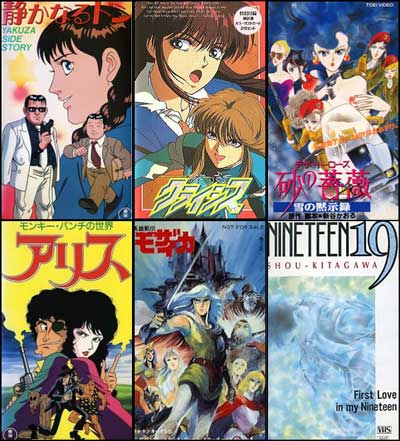
If you can pick out one or two that you've seen, I'd be seriously impressed. For the most part, finding one of these, at best, requires a good, astute scraping of Youtube and bit torrent sites. If there's no VHS rip, then it's off to Yahoo Auctions, to try and source a cheap old commercial tape to bid on. I think it's important to track stuff like this down, though—not only is some of it quite good, but the bulk of these titles never even made it as far as VHS fansubs, or from the rental-specific format of Japanese VHS to DVD. Here's five of ‘em.
My heart just about leapt out of my chest when I beheld the title: ZIGGY Soreyuke! R&R Band. Wait a minute, there's a Ziggy anime? And it's about that lovably hard-luck, big-nosed comics character in a rock n’ roll band?! That sounds too good to be true! Of course, it is too good to be true; the ZIGGY anime has nothing to do with the comic character. Instead, ZIGGY is a real-life Japanese band. Judging from their music videos, they spent big chunks of the 80s and 90s biting off bits of Kiss, Aerosmith, Poison, and other glam rock acts to create their own rockin’ style involving hot guitar licks and hilariously gigantic hair. Hey, it was the style at the time. And just like the Jackson Five, ZIGGY got their own cartoon! It looks like this.
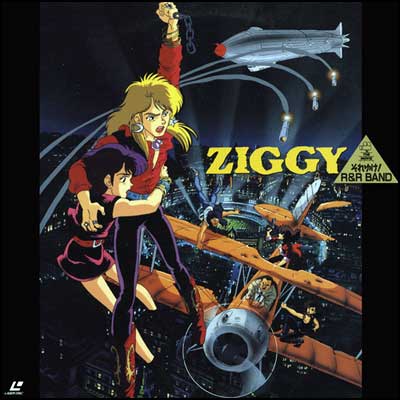
The ZIGGY feature has been identified, in various places, as both a movie and an OVA. That line can actually be blurry sometimes, as some OVAs screen in theatres, and some features are made for theatres but end up going to video instead. Since the idea of an 80s hair rock band having their own anime is hilarious, I'm just going to assume it's an OVA. ZIGGY actually had an interesting approach for this, though—along with the usual themes (fighting against THE MAN to make GREAT MUSIC!), the group actually used this OVA as a launch pad for their new record—if you wanted to hear those new songs first, you had to go to the theatre and see a screening. The album dropped two weeks later.
The world needs to know about Wolf Guy. This isn't just because it has an amazingly awesome title—seriously, Wolf Guy is the kind of thing I'd expect to see in the background of an Evan Dorkin Eltingville Club comic. It's because Wolf Guy stands alongside fare like Dark Warrior, Dog Soldier, and other entertainingly ludicrous action anime. It's about the exploits of a man named Akira Inugami (“Inugami,” by the way, is tantamount to naming a guy who turns into a werewolf “Wolff”). He gets caught up in some sort of crazy government conspiracy, and that's when we learn that he can turn into a werewolf! Well, from the neck up, anyway.
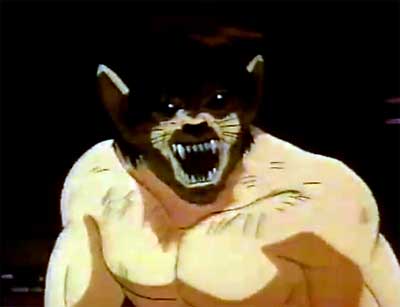
Wolf Guy is chock full of dumb one-liners, dumb action scenes (the first episode's antagonist guns down a secondary baddie, only for the bullet-riddled merc to leap up and plug him right back), and the kind of technical quality that can be seen in these two frames. See, here's Wolf Guy's version of one car passing another. It's like an animated French Connection!
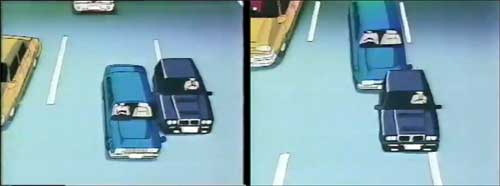
JC Staff made six Wolf Guy OVAs in 1992. I'm really not sure why we never got ‘em in English—with crazy violence, car chases, a trash-talking hero, and gratuitous nudity, you'd think Manga Entertainment would've grabbed it for release, making sure to dub in as many swear words as possible. The franchise has somehow remained relevant enough to spawn a manga redux in 2007, so maybe Wolf Guy won't stay stuck in the past forever.
Man, I love it when I find an obscure old OVA, and a whole bunch of its packaging and promotional materials are in English. Makes my job easier, you know? As it turns out, the VHS and laserdisc jackets for Shooting Star Gakusaver, a 6-episode OVA from 1993, have the title right there in English, so I've known about this little oddity for quite some time. Actually, the thing about Gakusaver is, it's really not that odd. It's sort of a super robot sitcom, as a bunch of school club kids team up under their brave but dumb teacher to defend the earth against some cartoonishly unthreatening aliens. How will they save their gakuen (school)? With the super robot Gakusaver, obviously!
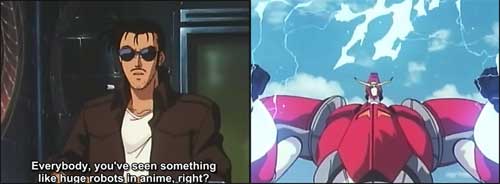
I like Gakusaver's animation pedigree. It's directed by Shinya Sadamitsu, one of Mobile Suit Gundam's old hands, and its mecha design is provided by Takahiro Yamada, who designed all the cool, shiny robots for the 80s Machine Robo cartoon. More recently, he designed the robots for the inarguably filthy super robot comedy Daimidaler, and has been drawing robots for the Battle Spirits card game for several years, as well. The show's decently animated, and has a nice early-90s shine to it. The jokes are hit-or-miss, but they arrive with enough frequency to keep you smiling; stuff like this stacks up nicely to the cult favorite Shinesman. Gakusaver's another show that looks to me like it would've done perfectly OK outside of Japan. Happily, new digital transfers of ancient fansubs have kept it from sinking beneath the waves forever.
I knew that THE 学園超女隊, a.k.a. The School Supergirl Corps, was gonna be cool, because it had that giant THE in front of the title. Lots of good anime do that, like The Ultraman, The Hakkenden, and The Big O. You can automatically make anything cooler by prefacing it with “the.” The main dude from The Kabocha Wine taught me that. Anyway, here's another 1991 one-and-done OVA from Magic Bus and Osamu Dezaki's big brother, Satoshi. We're experiencing a boom in anime based on light novels, but that's not a new phenomenon; this particular OVA is also based on a light novel, just a light novel that happens to be 25 years old.
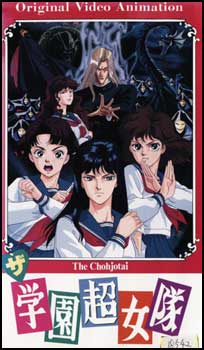
Turns out that The School Supergirl Corps is yet another part of the weird ESPer boom that also brought us fare like ESPer Mami, Cosmo Police Justy, and Locke the Superman. The three girls that make up the informal corps are Yuri (can levitate and shoot psionic blasts from her fingertips, but doing this scorches her school uniform), Okei (screams a lot; screams inflict damage), and Mai (super-duper strong; does wrestling moves). The resulting adventure is kind of like a lighter, less intense Project A-Ko, as our heroines square off against a mysterious ESP cult. Okei is smitten by the most evil-looking dude on the planet:
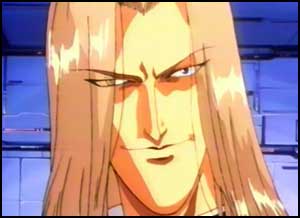
This was somehow shorthand for “handsome man” in this episode. He turns out to be a slimy bad guy, which may be the biggest not-surprise ever. Like Project A-Ko, there's a big mecha suit fight at the end. This isn't as good as A-Ko, but it's not bad. So how come we got Roots Search in English and not this?
These days, all the kids love something called Kantai Collection. Have you heard of it? It's sometimes abbreviated as KanColle (I prefer using the romanization “Kancle,” personally), and is an online card game where you pit famous World War II naval ships, complete with cutie-pie girl personifications, against each other. The “fleet girls” have taken on a life of their own, with bishoujo figurines, manga side stories, and a forthcoming anime all about the exploits of anthropomorphized versions of the warships your grandpa helped sink in WWII. But weird speculative fiction about World War II stuff has been around a long time; in the west, authors like Harry Turtledove have made it a cottage industry. There's alternate history in Japan, too, and a big proponent of it is Deep Blue Fleet, aka Konpeki no Kantai – the original Kantai Collection, dammit.
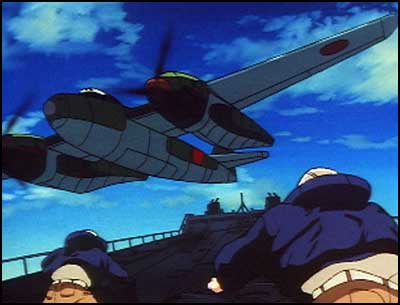
Deep Blue Fleet started as a series of novels by Yoshio Aramaki in 1990. Much like the thematically similar Zipang, it depicts an element of Japanese military—in this case, Admiral Isoroku Yamamoto himself—coming unstuck in time and hurtling backwards. Yamamoto, facing his real-life death in WWII, instead wakes up aboard a naval ship in the waning days of the Russo-Japanese War. He quickly brings his knowledge of future events to bear on Japan's military, encouraging rapid modernization, killing Hideki Tojo's bid for power, and launching an ultimately successful campaign against the United States in WWII. Of course, since the Japanese are the good guys in this story, they end up liberating the western colonies they invade in the Pacific, and after deep-sixing the Pacific Fleet and winning the war against the U.S., they team up with America and Britain to kick some Nazi ass. The result is… well, pretty ludicrous to any historian, but still awesome fare if you love old military hardware and Japanese nationalism. Apparently a lot of people did, because this thing sold millions of copies, and has spawned model kits, strategy games, and all sorts of other crap. Given its nationalistic slant, I'm not surprised that nobody in these parts was clamoring to bring it out over here. I'd still like to see it, though!
You might've noticed something about the above five obscurities. None of them came out after 1994. There's a reason for this, and it's an interesting one. Anime licensing started to heat up in the late 90s. Because of this, with few, and I'm talking very few exceptions, every OVA after about 1996 got some sort of release in North America. Even now, fare like Jewel Hunter BEM Lime is getting prepped for a re-release. Who wants another printing of that?! Is it you?
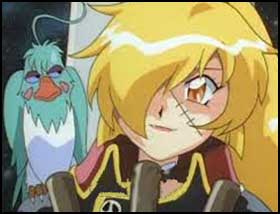
In any case, it's important to keep our memories of weird old OVAs alive. I hope you'll follow my lead and seek out a few of these little-known gems. As I often do, I'll leave you with a question: which one is the good Tenchi Muyo? If you ask me, the good Tenchi is clearly Magical Project S. I refer you to the above picture for all the proof that you should need.
discuss this in the forum (59 posts) |